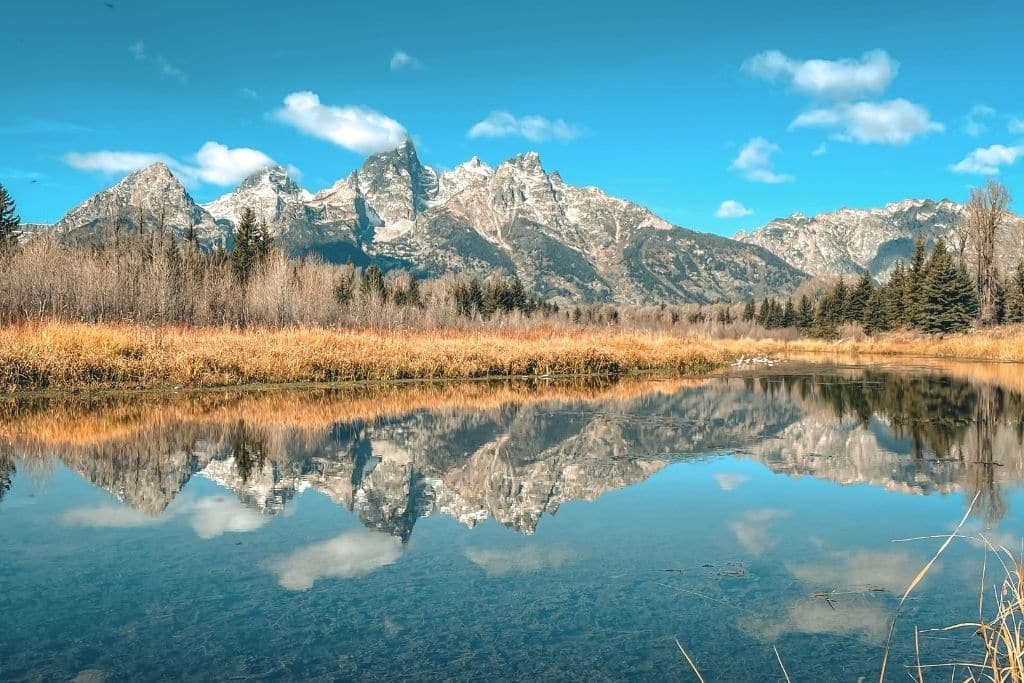3 Day Grand Teton National Park Itinerary + Must Know Tips
If you’re planning your first visit and want to make the most of your time, this Grand Teton National Park Itinerary is for you!
It will guide you through three perfect days filled with jaw-dropping views, iconic hikes, and peaceful moments in nature.
My husband and I spent a long fall weekend road-tripping through the Tetons in our truck camper, squeezing every bit of adventure we could into just three days.
From sunrise reflections to challenging hikes, we explored this small but mighty park from top to bottom—so you don’t have to guess what’s worth your time.
In this post, you’ll get a detailed, day-by-day itinerary, plus insider tips to help you plan the perfect mountain adventure.
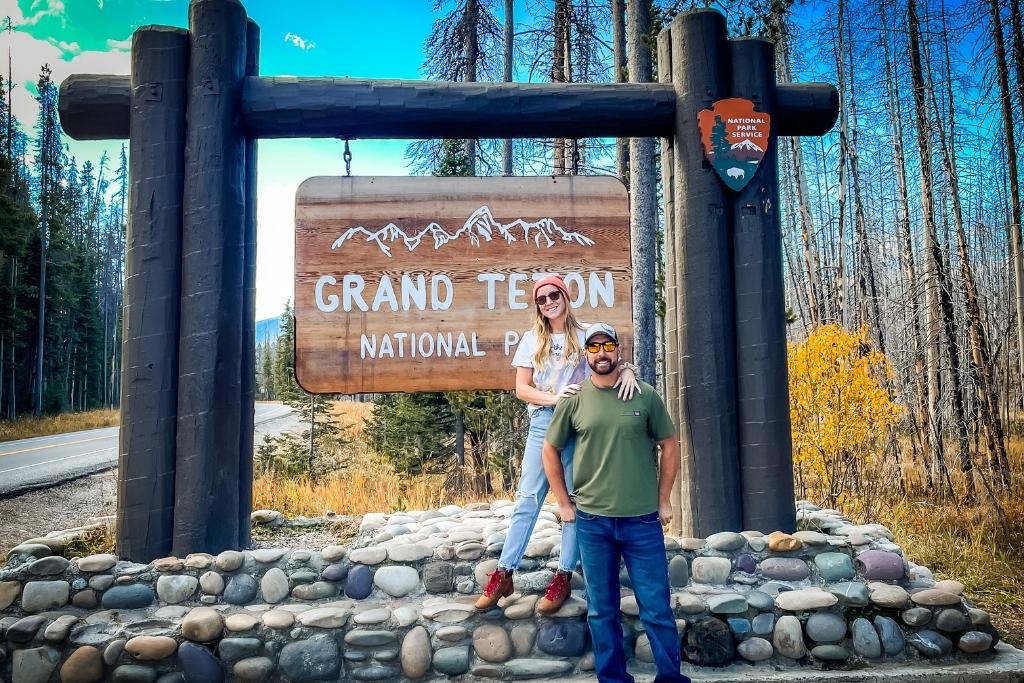

Grand Teton National Park At A Glance
- Location: Jackson Hole, WY
- Best time to visit: June to October
- Entrance Fees: $35 per vehicle for 7 days or $80 for America the Beautiful Pass
- Open: Year-round
- Activities: Hiking, fishing, photography, kayaking, swimming, camping
- Visitor Center: Grand Teton National Park has three main visitor centers – Jenny Lake, Craig Thomas, and the Laurance S. Rockefeller Preserve.
3 Day Grand Teton National Park Itinerary: Your Day-by-Day Plan
There’s a lot to see in Grand Teton National Park, even though it’s a pretty tiny National Park. But with a little planning, three days is just enough to experience the best scenic views and hikes.
This Itinerary is designed to maximize your time without feeling rushed. Here’s how to spend your three days in the Tetons.
Map of Your Tetons Itinerary
(The green pins are the things to see and do in the park, and the orange pins are where to stay.)
Day 1: Scenic Drive + Hike to Delta Lake + T.A. Moulton Barn
Day one kicks off with some of the most iconic views in the park. Get ready for a scenic drive, a rewarding hike, and a picture-perfect sunset to end the day.

Morning: Drive the Scenic Teton Park Road
Start your morning with a drive along Teton Park Road.
This 20-mile stretch offers nonstop scenic views of the Teton mountain range the whole way.
We pulled over at many of the turnouts because it was just so pretty the whole way. I think we spent three hours on a one-hour drive because the views were just that good.
Make sure to pull over at Snake River Overlook for the classic photo of the river winding through the valley with the jagged peaks in the background.
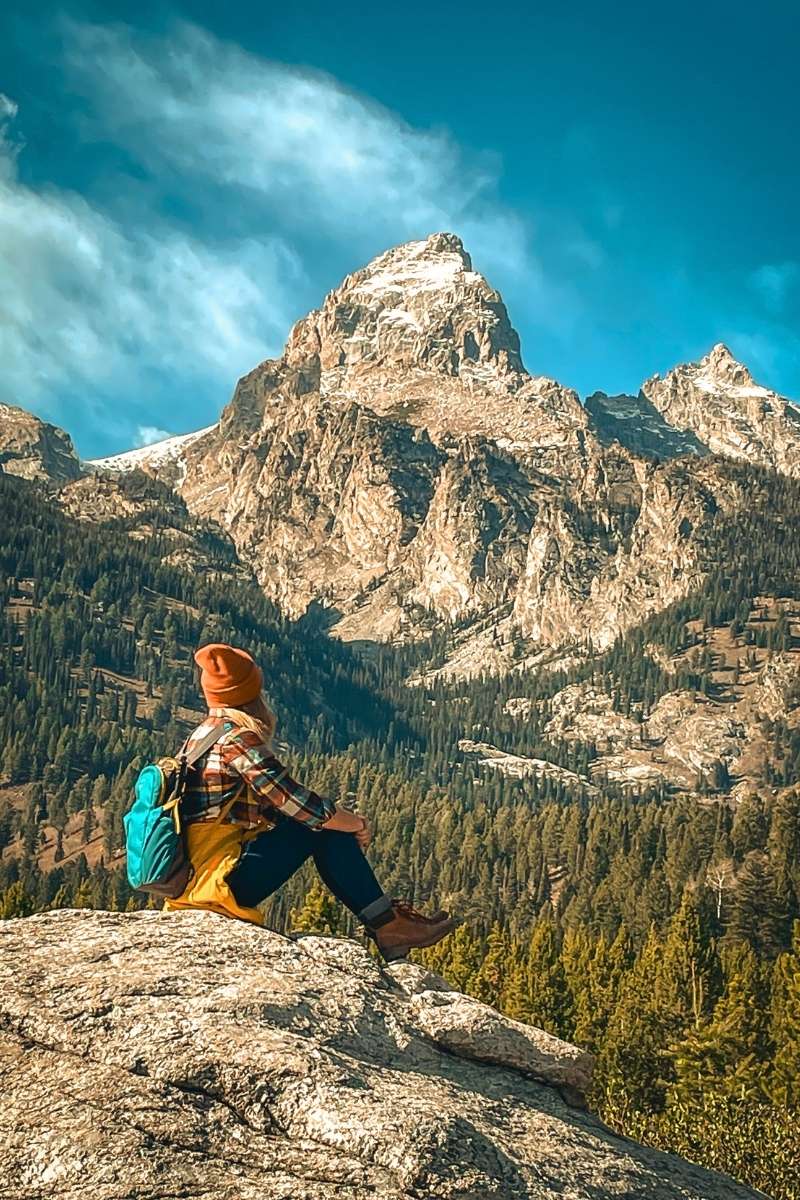
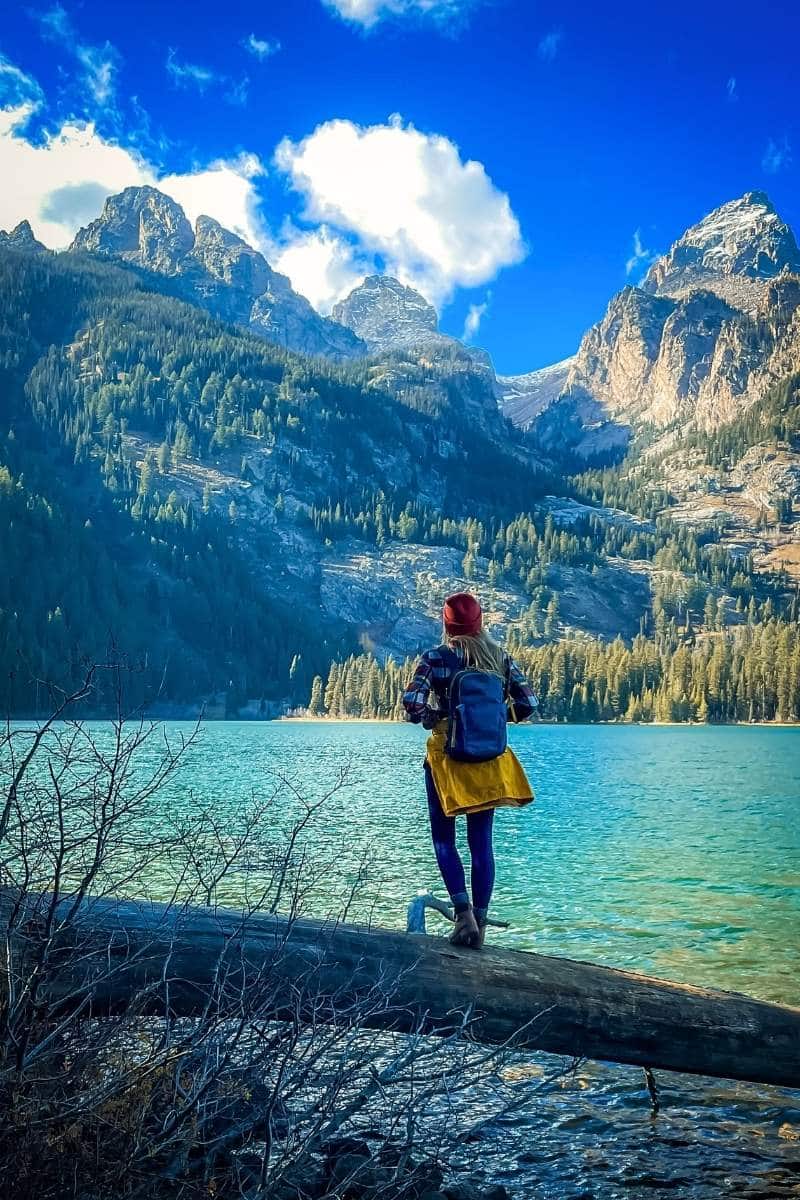
Afternoon: Hike to Delta Lake
In the afternoon, lace up your hiking boots for a hike into Delta Lake.
This is a moderately challenging 7.4-mile out-and-back hike with about 2,300 feet of elevation gain, so be ready to break a sweat.
The trail gets steep and rocky in a few parts, but not too bad. It’s totally worth it once you get to the lake!
Personally, I think Delta Lake is the prettiest lake in Grand Teton National Park. Its milky blue water sits beneath towering, rugged peaks and it just takes your breath away. Actually, the whole hike will!
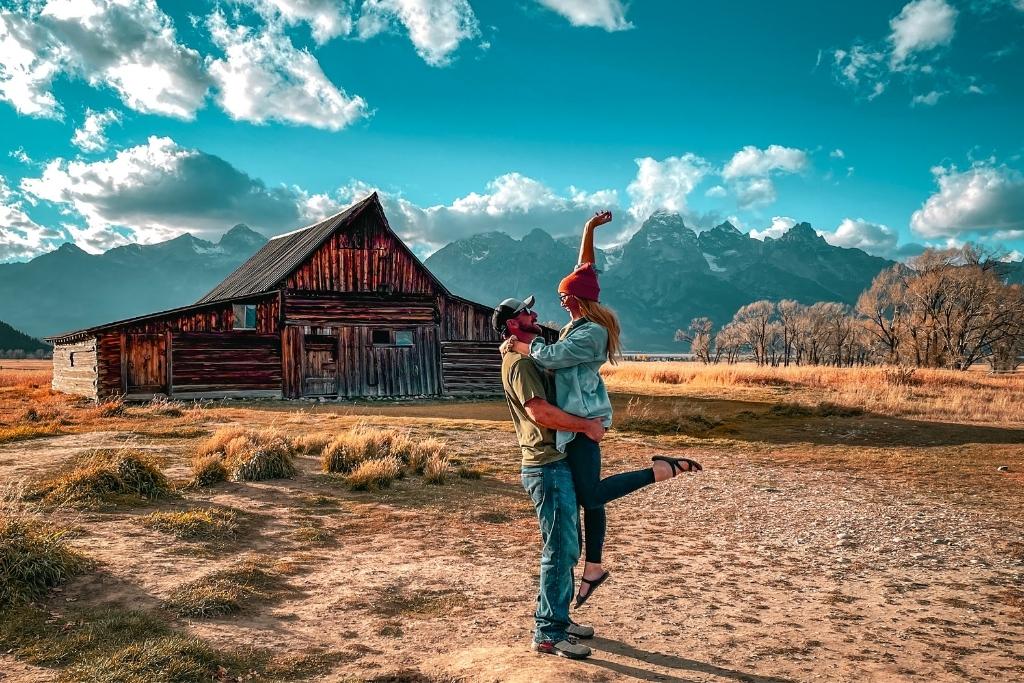
Sunset: Mormon Row Historic District
End your day with sunset at Mormon Row Historic District.
This is where you’ll find the T.A. Moulton Barn, which is hands down one of the most photographed barns in the whole country.
If you’ve ever Googled Grand Teton, you’ve probably seen it. It’s kind of the park’s unofficial mascot.
Sunset is the best time to be here. The way the golden light hits the mountains and the old barns is just unreal.
Day 2: Jenny Lake Scenic Drive & Overlook + Hidden Falls & Inspiration Point
Day two is all about soaking up the views around Jenny Lake—one of the most iconic spots in the park. From serene lake views to a hidden waterfall and wildlife, today’s adventures are some of the most memorable.


Morning: Jenny Lake Scenic Loop Drive
Start your morning with a drive around the Jenny Lake Scenic Loop. It’s a short, one-way, and seriously stunning drive.
There’s a very popular viewpoint towards the beginning of this loop around the first bend along this road that photographers love. Once you see it, you’ll want to pull over and get your shots.
Coordinates for the photo spot: 43°47’35.9″N 110°42’22.7″W
Pro Tip: If you want that perfect shot with the soft morning light, make sure to get there right at sunrise. Parking can fill up fast, so the earlier the better.
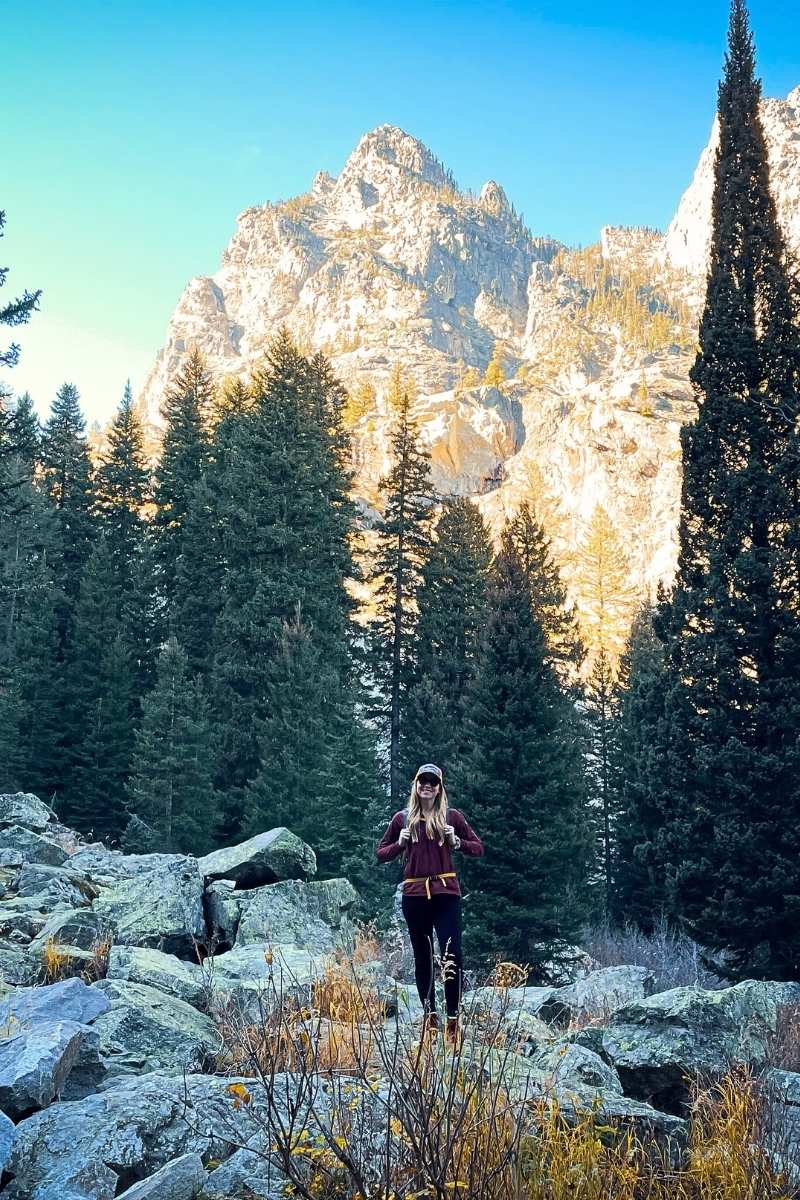

Afternoon: Jenny Lake Overlook + Hike to Inspiration Point & Hidden Falls
After your morning drive, head to the Jenny Lake Overlook.
There’s a big parking lot here and a short, easy trail that takes you down to the water’s edge. It’s a great place to just sit and soak in the views—or find a quiet spot for a lakeside picnic if you packed lunch.
The water is crystal clear, and the mountains reflecting off the surface make it feel like a scene straight from a postcard.
After soaking in the lake views, hike to Inspiration Point and Hidden Falls. It’s a total must-do while you’re here.
Pro Tip: Take the lake shuttle from the overlook parking lot and cross the lake to the trail. The hike will be cut by about two miles each way. Boats run every 10–15 minutes and cost $12 one-way or $20 round trip. No reservations needed. Just head down the paved path from the Visitor Center to the dock and grab your ticket there.
If the shuttle isn’t running or you don’t want to take it, I suggest you start the hike from Moose Pond Trail. This is where we started the hike since the shuttles were not running in the Fall when we visited.
Coordinates for an alternative starting point: 43.746674, -110.736111 (pinned on the MAP above)
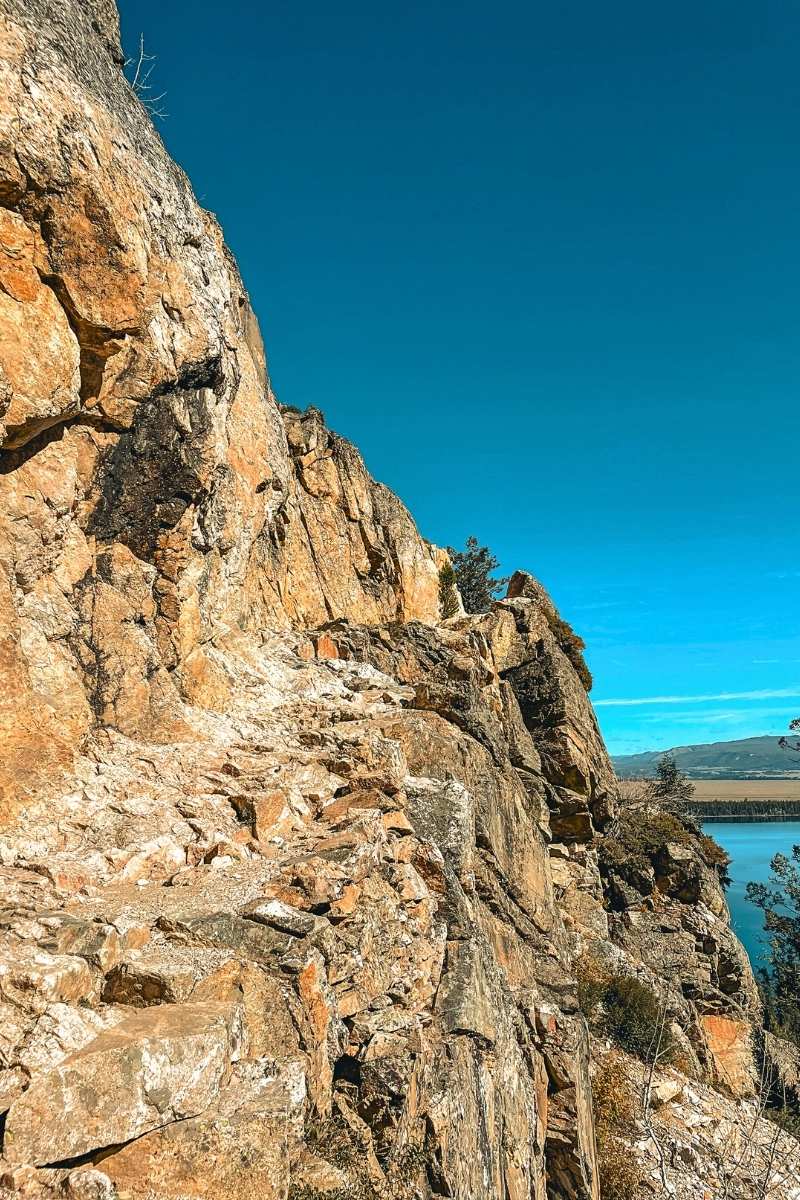

The hike to Hidden Falls is short and pretty easy, but if you keep going up to Inspiration Point, get ready for a good climb. It gets steeper and more challenging, but the views from the top are so worth it.
On the way up to Inspiration Point, we took way more breaks than we expected—partly to catch our breath, and partly because every corner had a better view than the last.
Bonus: this trail is also a great place to spot wildlife. We actually saw a mama black bear and her two cubs along the shoreline! Bears are pretty common in this area, so make sure you know how to stay safe. You can check out the park’s Safety in Bear Country webpage before your trip.
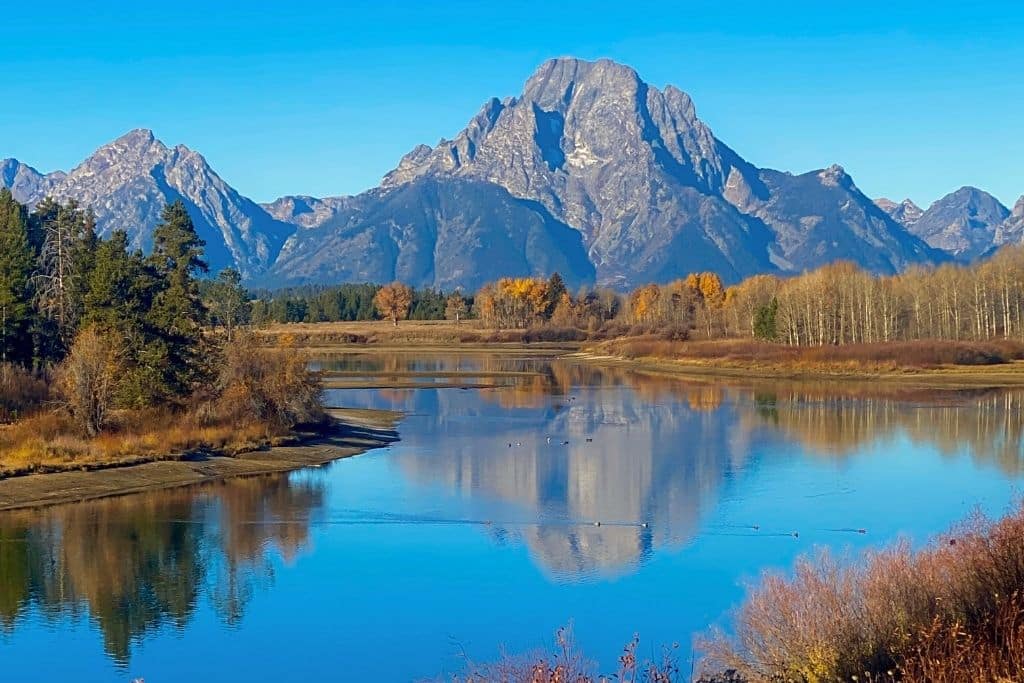
Evening: Spot Wildlife at Oxbow Bend
Wrap up day two with a stop at Oxbow Bend Overlook, one of the best spots in the park for wildlife viewing.
Moose are often seen here, along with elk, and even the occasional bear.
The best time to spot wildlife is early in the morning or around sunset when they’re most active.
You can easily swap this stop with your sunrise activity today, depending on where you’re staying or how your day’s going.
It’s beautiful anytime, but golden hour makes it extra special. Bring your binoculars and keep your camera ready!
Day 3: Sunrise at Schwabacher Landing + Explore Jackson Hole
It’s your last day in the Tetons, so we’re going to soak up all the best and final views.
And spend a little time exploring the charming town of Jackson Hole before you head home.
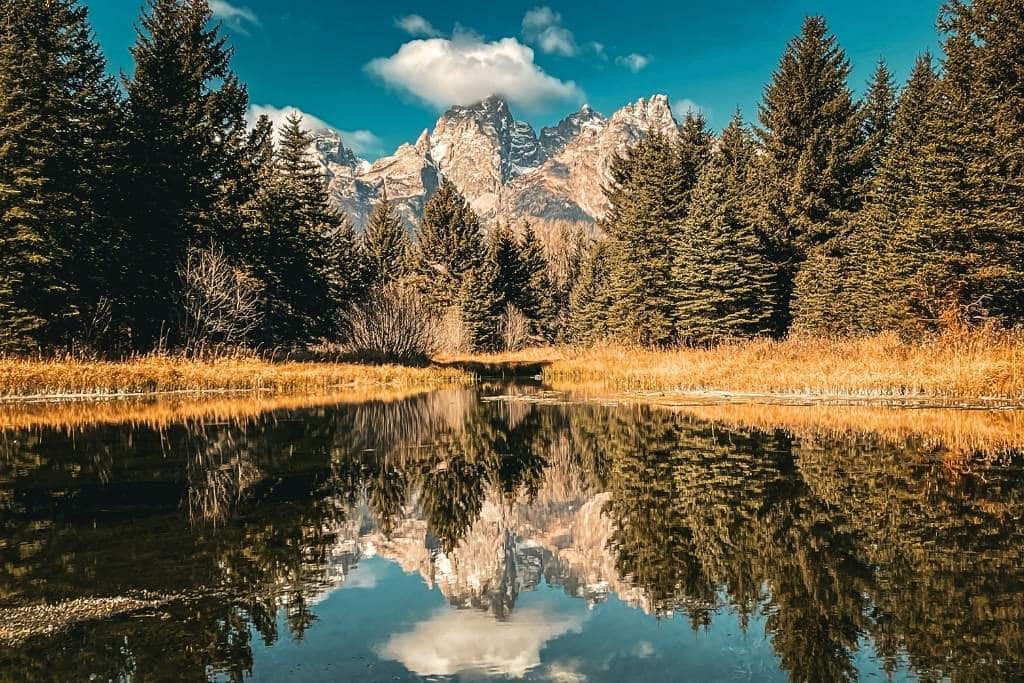
Morning: Sunrise at Schwabacher Landing
Start your last day at sunrise at Schwabacher Landing.
It’s the best spot in the park to photograph dreamy reflections of the Teton mountain range on the calm water.
Pro Tip: The key is to get there early before the breeze picks up. Calm water makes all the difference for that perfect mirror-like photo.
The walk from the parking lot is short and easy, with a well-marked trail that leads you right to the perfect photo spot.
FYI: This spot is super popular with photographers, so you won’t be alone, but it’s surprisingly peaceful. Everyone’s there for the same reason, quietly soaking in the view.
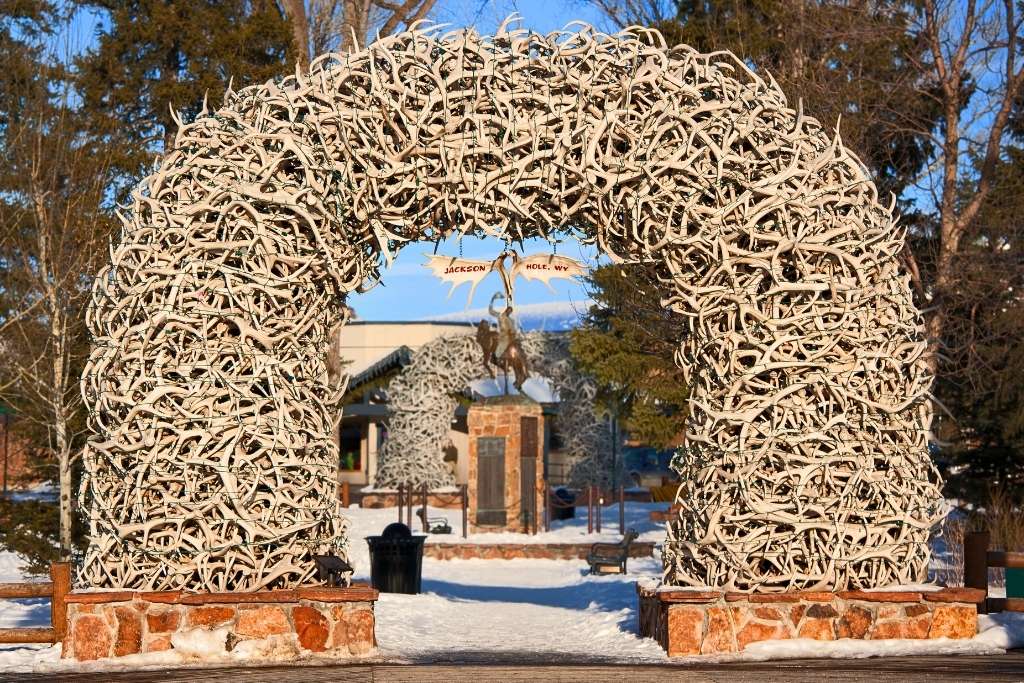
Afternoon: Explore Jackson Hole
Spend the rest of your final day exploring Jackson Hole.
This lively mountain town is just south of the park and is a must-see. It’s a fun town with a cool, Western vibe, and delicious restaurants to grab a bite, shopping, art galleries, and cozy coffee shops.
We grabbed coffee at Cowboy Coffee and just wandered through town.
Oh, and don’t miss the famous elk antler arches in the town square!
Jackson is a great place to end your trip and soak in a little local culture before saying goodbye to the Tetons.
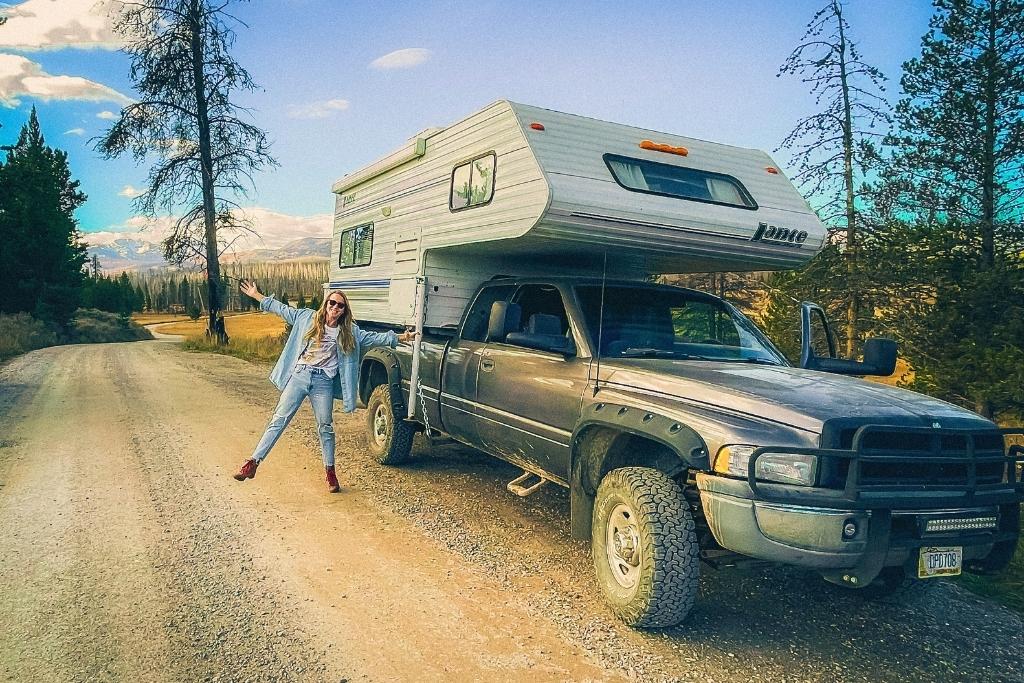
How To Get To Grand Teton National Park
The easiest way to get to Grand Teton National Park is through Jackson Hole, Wyoming.
The town is just a 15–20 minute drive from the park’s main entrance and makes a great home base for your visit.
If you’re flying in, the Jackson Hole Airport (JAC) is the closest airport. It’s actually located within the park boundaries, so you’ll be surrounded by mountain views the moment you land. This airport is small but well-connected, with daily flights from many major cities.
Another option is to fly into Idaho Falls Regional Airport (IDA), which is about a two-hour drive from the park and may offer more budget-friendly or flexible flight options.
The park has four main road entrances: the Moose Entrance (from Jackson), Moran Entrance (from Yellowstone), Granite Canyon Entrance (also near Jackson), and the North Entrance near Flagg Ranch.
During winter, only the Moose Entrance stays open. The others close due to snow and limited access. So, if you’re visiting outside of summer, it’s a good idea to check road conditions and seasonal closures on the National Park Service website before your trip.

Best Time To Visit The Tetons
While the Tetons are beautiful year-round, fall is hands-down my favorite time to visit.
The changing leaves add a burst of golden color that makes the whole park feel extra magical. It’s also way less crowded than summer, which means quieter trails and easier parking.
Plus, the crisp, cool weather is perfect for hiking. No sweltering heat, just fresh mountain air and stunning views.
How Many Days Do You Need In Grand Teton National Park
I personally think you need at least three days in Grand Teton National Park to really experience it—especially if you want to do some hiking. There’s just so much to see, and some of the best spots take a little effort to reach.
That said, if you’re more into scenic drives and photo ops, you could hit the highlights in a day and a half. It all depends on your pace and what kind of adventure you’re after.
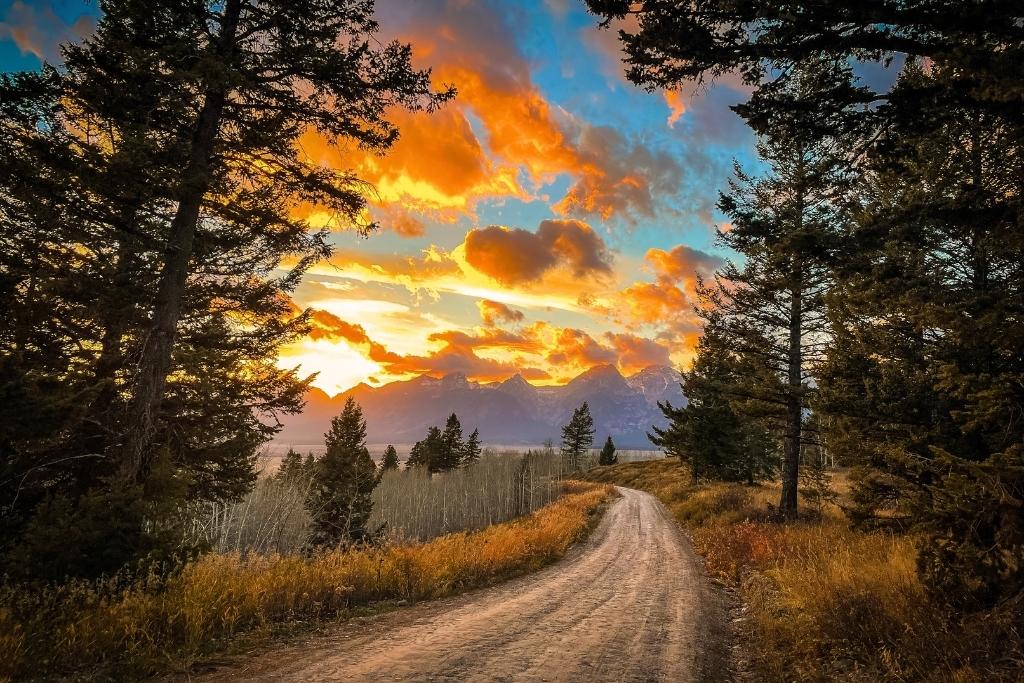
Best Things To Do in And Around The Park
There’s so much more to Grand Teton than just epic views of the jagged peaks. This park is packed with adventure.
And once you’ve explored everything to see and do inside the park, don’t skip the nearby gems like Jackson Hole and Yellowstone. They’re totally worth adding to your trip.
Things To Do Inside Teton National Park
Go Hiking
Hiking is one of the best ways to experience the Tetons up close. Some of the most popular trails include Death Canyon, Phelps Lake, Delta Lake, Inspiration Point, and Hidden Falls. Whether you’re into tough climbs or easy strolls, there’s a trail with your name on it.
Wildlife Viewing
Wildlife viewing is a big reason why so many people love this park. You’ve got a real chance of spotting moose, grizzly bears, black bears, bald eagles, and more—especially around Oxbow Bend Overlook.
Pro Tip: If you see traffic cones along the road, that usually means someone’s spotted wildlife nearby. Slow down and keep your eyes peeled!
Photography
If you’re into photography, the Grand Tetons will blow you away.
The most photogenic spots are the dramatic Grand Teton Mountain Range, the peaceful reflections at Schwabacher Landing, the sunrise from Signal Mountain, or the rustic barn of the Mormon Row Historic District.
No matter where you point your camera, you’re bound to get a shot worth framing.
Enjoy The Scenic Lakes
The lakes in this park are next level beautiful.
Hike to my favorite lake, Delta Lake, with milky blue waters surrounded by jagged cliffs. Or spend time along the Lakeshore Trail at Jenny Lake, or have a relaxing kayak at Colter Bay.
Whether you’re paddling, picnicking, or just taking it all in, the lakes are a great way to slow down and enjoy the scenery.
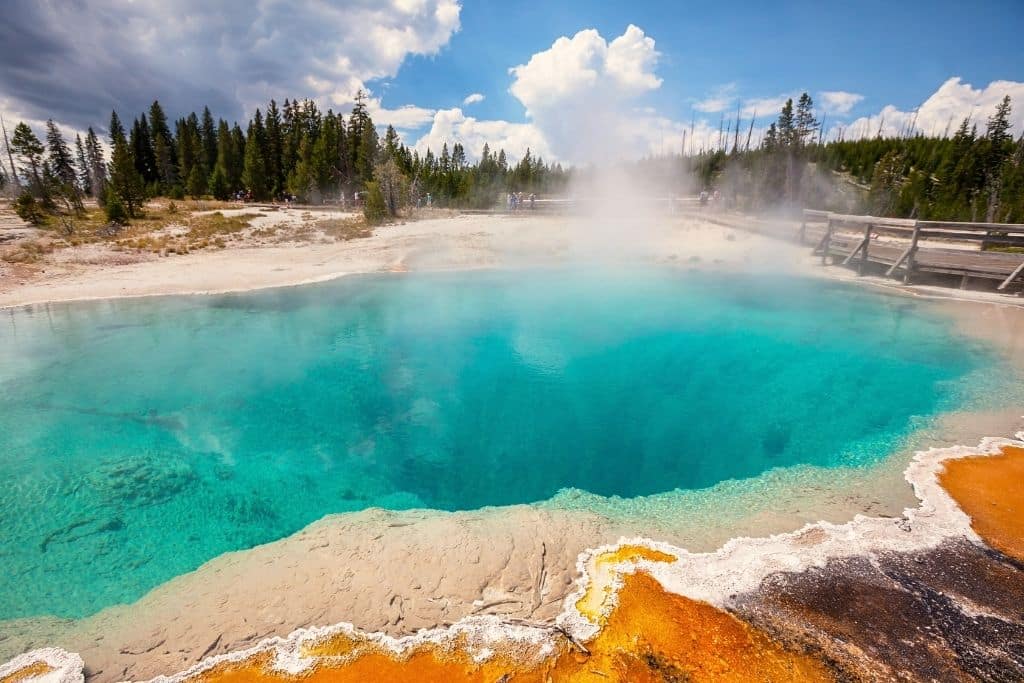
Things To Do Outside The Park
Visit Yellowstone National Park
Definitely consider combining your trip with Yellowstone National Park! The south entrance to Yellowstone is just 10 minutes from Grand Teton, making it super easy to link the two parks into one unforgettable adventure.
Explore Jackson Hole
Don’t skip Jackson Hole. This little western themed mountain town is so fun to explore.
You’ll find great restaurants, local shops, art galleries, and even live music. It’s the perfect way to wrap up your trip (or kick it off if you’re starting there!).
Where To Stay
There are plenty of great places to stay, both inside Grand Teton National Park and in the nearby town of Jackson Hole. Here are a few top choices to help you pick the perfect home base for your trip.
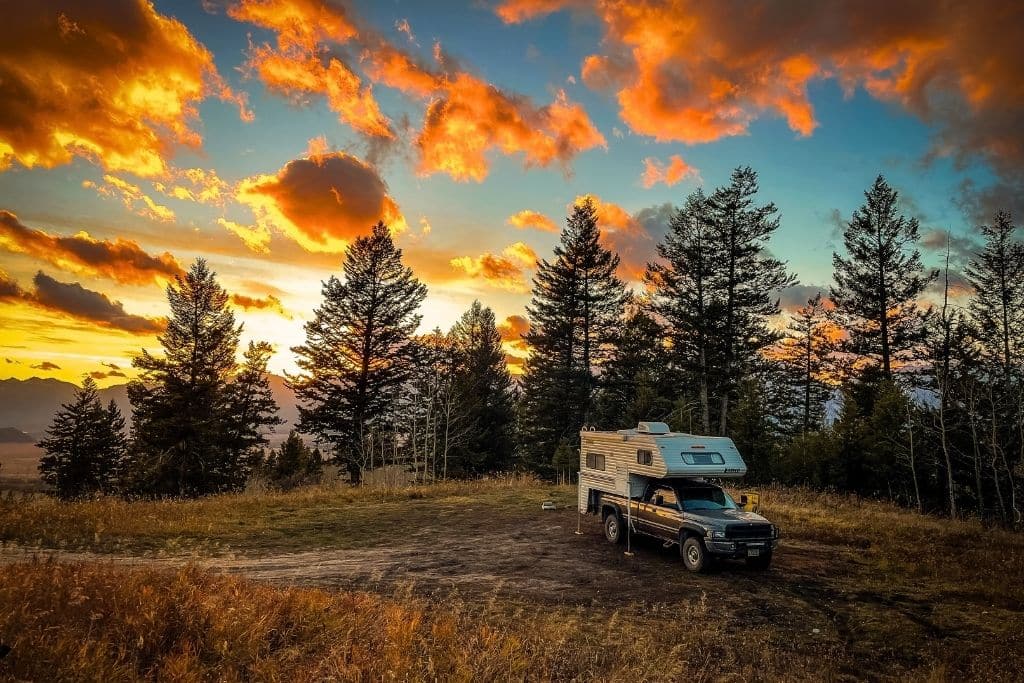
Inside the Park
Camping in The Park
If you want a more outdoor experience, there are six campgrounds, some including rustic cabins, located throughout the park.
Just be sure to check the National Park Website for campground details and to make reservations early, especially if you’re visiting during peak season.
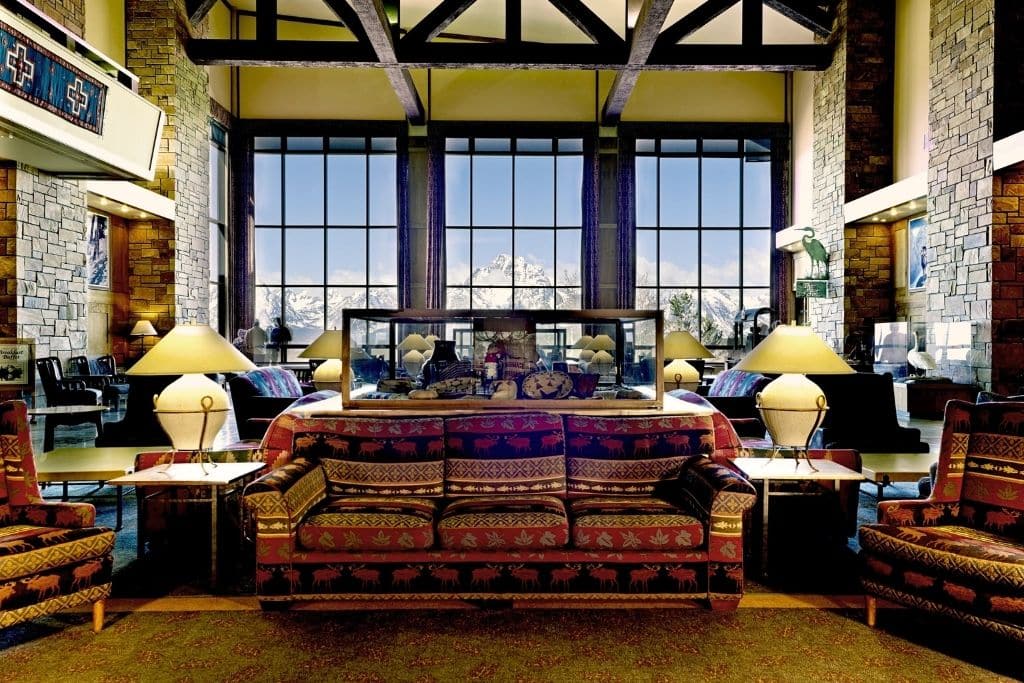
This is a full-service resort hotel located right in the heart of the park. You’ll have perfect mountain views and easy access to the best hiking trails and lakes. It’s the best option if you want to stay inside the park.

Outside The Park
If you’re after more of a resort feel, check out the Teton Club in the Teton Village, just outside the park. It’s incredibly beautiful and a great spot for dining, shopping, and luxury after a day of adventuring in the wilderness.
You can even ride the gondola up to Rendezvous Peak for sweeping views over the Tetons. Totally worth it!
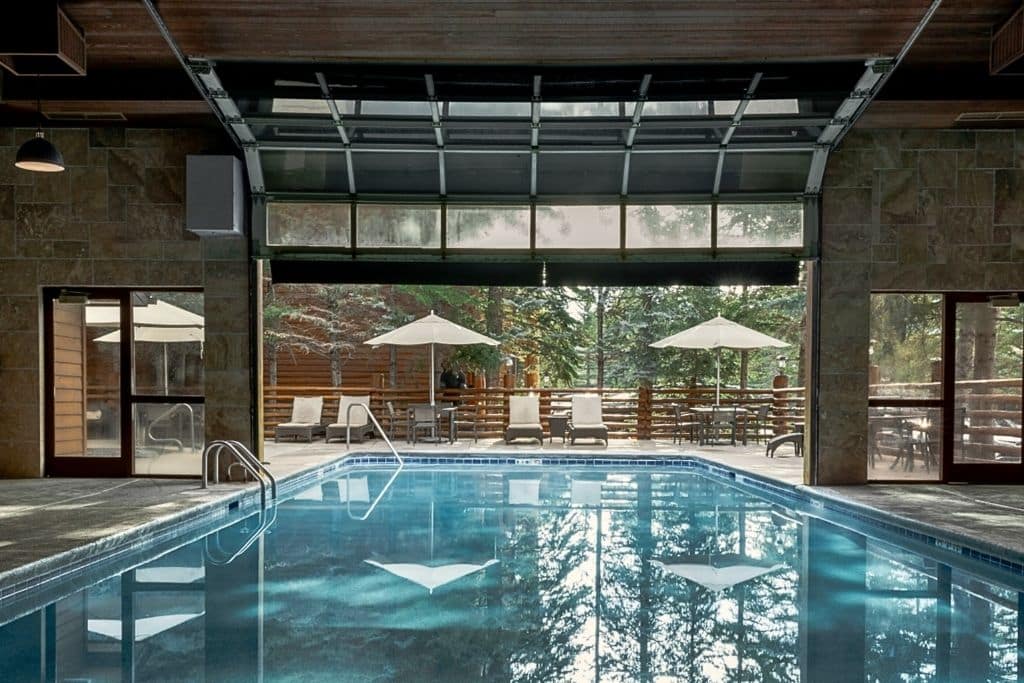
This is my top pick if you want to stay in a hotel. My husband and I stayed here one winter on a ski trip and it was fantastic!
It’s located in town and is a great base if you want easy access to the park and everything in town. Plus, the indoor/outdoor heated pool is a nice bonus after a long day of hiking.

Tips For Visiting The Grand Tetons
As always, before you head out on your adventure, knowing a few local tips can really make a difference. So here are some things I think you’ll want to know before you go.
Many Trails Don’t Open Until June
If hiking is a big part of your plan, you should know that many of the trails stay snow-covered well into June. Always check trail conditions before heading out, especially if you’re visiting in spring.
Some Facilities Are Seasonal
Not everything in the park is open year-round. Visitor centers, campgrounds, lodges and restaurants operate seasonally. So check the park’s Operating Hours & Seasons page to see what’s available during your visit.
There Is No Reservations Needed To Enter
You don’t need a reservation to enter Grand Teton National Park, at least not yet, which makes a spontaneous trip possible. Just show up and pay the entrance fee (or use your America the Beautiful Pass).
Book Accommodations Early
While you don’t need a reservation to get in, you do need one for campgrounds and lodging—especially in peak season. These spots fill up super fast, so plan ahead and reserve your spot early.
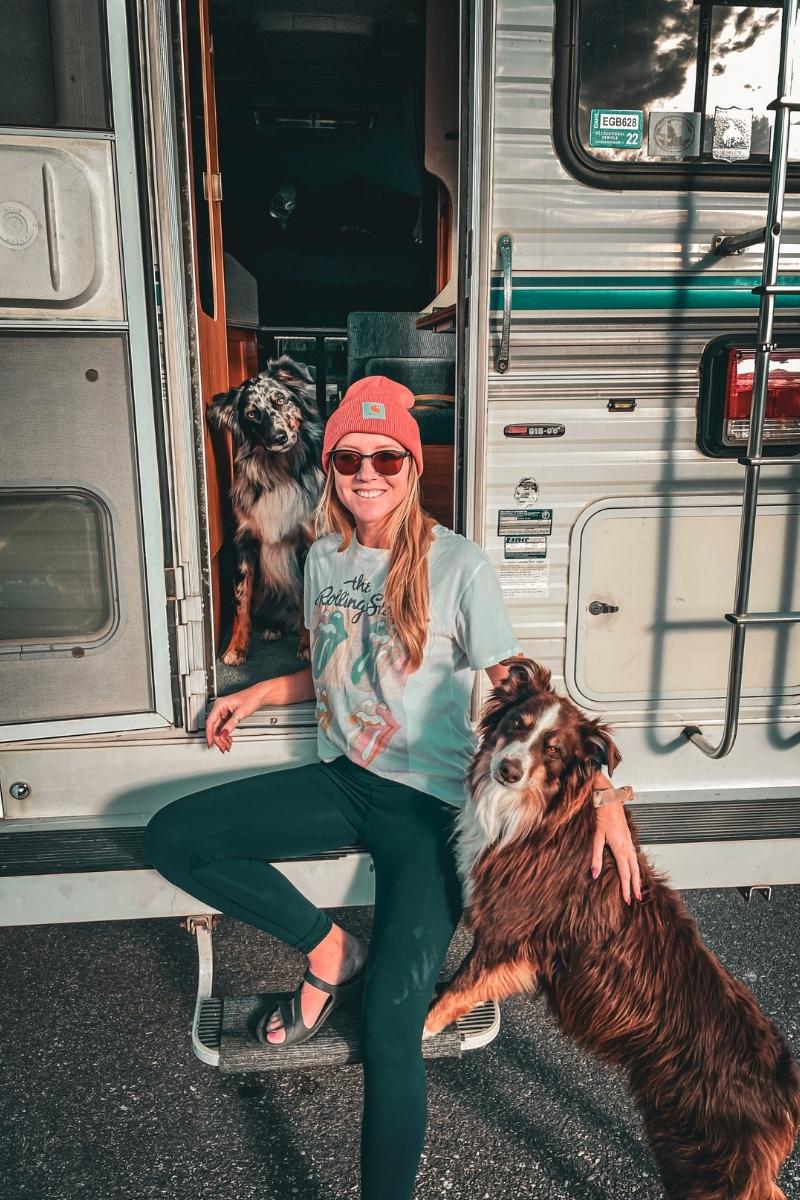
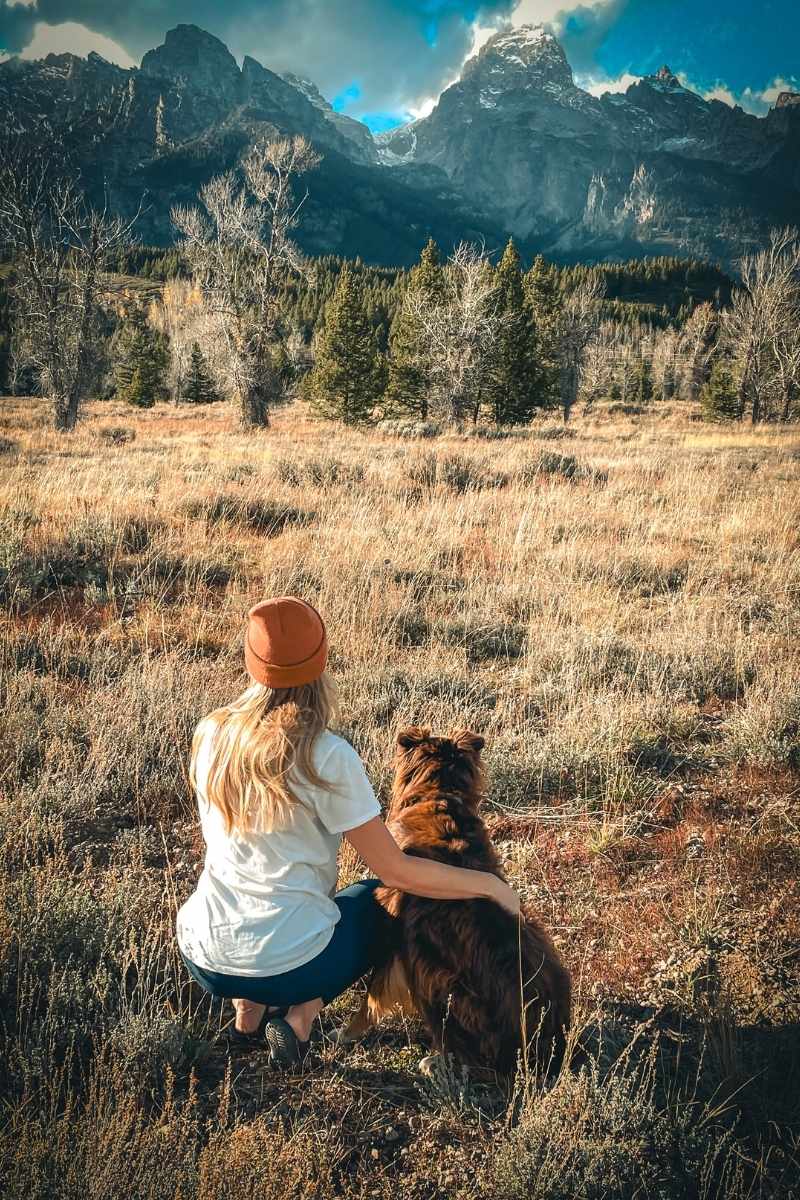
Pets
We visited the park with our three pups and it was pretty easy.
But you should know that dogs are not allowed on trails, beaches, pathways, inside visitor centers, or in park waters. They are allowed in campgrounds and along roadways and parking lots but must be on a leash at all times.
During our hiking adventures, they hung out in the camper, and since we visited during the fall, the temperature was perfect for them.
Avoid Peak Times
The park is busiest between 9 am and 4 pm, especially in summer when tour buses from Jackson Hole roll in. Early mornings and late afternoons are your best bet for quieter trails and easier parking.
Leave No Trace
Help keep the Tetons beautiful by following Leave No Trace Principles. Pack out everything you bring in, dispose of trash properly, and use the recycling bins available throughout the park.
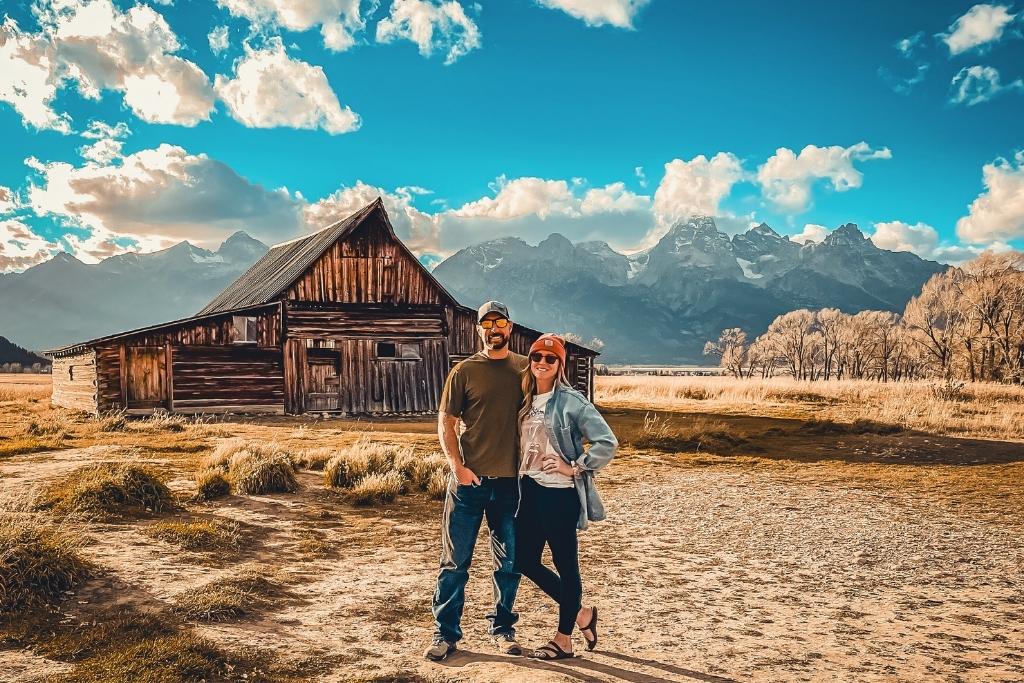
FAQs About Grand Teton National Park
You asked, I answer. Here are the most common questions about visiting the Tetons.
What is the best month to go to the Grand Tetons?
In my opinion, late September is the sweet spot. You get fall colors, mild temps, fewer crowds, and still plenty of daylight. July and August are generally the best window for hiking and clear mountain views, but fall just has a little more magic.
Can you do Grand Teton and Yellowstone in one trip?
Yes, absolutely! The south entrance to Yellowstone is only about 10 minutes north of Grand Teton National Park, which makes combining them super easy. I’d suggest spending a few days in each if you can. They offer very different landscapes and experiences.
Should I go to Yellowstone or the Tetons first?
It honestly depends on your route, but I personally recommend starting with Grand Teton. It’s smaller and more peaceful than Yellowstone, which is way bigger, busier, and can feel a bit overwhelming. The Tetons are a great warm-up to the chaos of Yellowstone.
Do you need bear spray in Grand Teton?
Yes, bear spray is strongly recommended if you’re planning to hike in the park. Both black bears and grizzly bears live in the Tetons, and sightings are common. Especially in the backcountry or around lakes. Always stay bear aware, make noise on trails, and know how to use the bear spray just in case.

That’s a Wrap
I know it can feel overwhelming to try to fit everything into just a few days, but I hope this Grand Teton National Park Itinerary shows that it’s totally doable and worth it.
After spending three packed days exploring this park ourselves, I can honestly say it’s one of the most rewarding national parks we’ve visited.
📌 Love it? Pin it!
And if you want more detailed guides and itineraries like this… Subscribe to my newsletter for new guides and a whole bunch of free resources and tips!
Catch ya on the next adventure!

